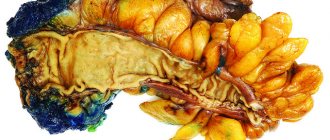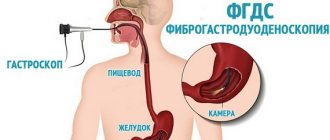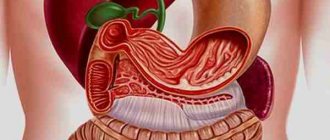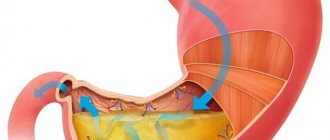Problems with bowel movements, dietary errors, gastrointestinal diseases and many other problems can cause mucus from the anus. This is not always a pathology. You should visit a doctor if the discharge changes color or has an unpleasant odor. In addition, you need to notice accompanying symptoms, this will help you quickly prescribe appropriate tests and treatment.
The appearance of discharge from the anus
The secretion of translucent liquid in the lower gastrointestinal tract in the area of the crypt sinuses is a natural process. It helps the coordinated functioning of organs and the movement of masses through the intestines.
Usually the process is invisible to a person and does not bother him. But if the amount exceeds the permissible limit or acquires an unnatural color, then this should be a reason for a visit to the doctor.
Passage usually occurs during a bowel movement, but with certain health problems it can occur regardless of going to the toilet. Sometimes with constipation, mucus comes out instead of feces.
If mucous discharge occurs between urges, this may indicate sphincter weakness.
Nature of the discharge
By the nature of the discharge, it is often possible to determine the presence of intestinal diseases, an inflammatory reaction that requires medical intervention. The situation cannot be left to chance and self-medication. The consequences can be bad, therapy can be difficult. In advanced situations, it does not give much chance of recovery.
Bloody
Blood from the anus is often immediately noticeable, usually accompanied by pain in the anal area. Occasionally, men may not notice it, but other symptoms of the disease still appear. The causes of this symptom may be anal fissures, hemorrhoids, tumors in the colon, problems with stool, worms, blood diseases, etc.
Often such discharge can be accompanied by pain in the anus, especially during defecation, diarrhea, vomiting, fever, etc.
Due to excessive blood loss, anemia may develop, which is accompanied by lethargy and drowsiness, pallor and rapid fatigue even from minor physical activity.
Oily
Discharge with an oily structure is often found in people who eat improperly. Typically, greasy stool can occur after eating foods that are high in calories and have a large amount of fat. In some cases, this phenomenon can occur as a result of taking medications that help you lose weight.
Fatty stool is one of the symptoms of pancreatitis. But still, it is more often found in people who abuse fast food.
Treatment is prescribed individually, depending on the situation of each individual patient, but most often a diet is prescribed that excludes the consumption of flour and fat-rich foods, as well as alcohol, spicy ingredients, salt and spicy foods. Eating food should be in small portions, but often.
Liquid
There are many reasons for the appearance of watery fluid from the anus: during intoxication, after operations, fissures, hemorrhoids, fungus or proctitis, such discharge is often observed in patients and is one of the main complaints.
White or milky
The appearance of white discharge from the anus in men is one of the symptoms of a violation of the intestinal microflora, which can appear due to the use of antibiotics in large quantities and drugs that provoke hormone surges. If the white masses have the smell of sour milk, we can talk about the presence of candidiasis. In an advanced situation, the discharge may acquire a reddish tint.
Slime
Large volumes of mucous discharge from the rectum in men are not normal. There is an exception, but then this phenomenon is not accompanied by other symptoms. If defecation is accompanied by pain, there is a frequent urge to defecate, there is discomfort, we can talk about a pathology that requires treatment.
Increased humidity in the intimate area as a result of the appearance of mucus causes not only discomfort, but also contributes to the development of inflammation of the male genital organs. There are many reasons for this phenomenon, but the most common is contracting an STD through anal sex.
Pus
The appearance of purulent exudate always signals the presence of a severe inflammatory process or an abscess. Usually this phenomenon is accompanied by a pungent odor, and pieces of food can be seen in the stool. In this case, the color may change - there are green, yellow or brown inclusions during bowel movements or on linen outside the emptying process.
Foam from the anus
The appearance of foam may indicate the development of inflammation in the intestines. This phenomenon in some cases signals the development of a neoplasm or adenoma.
Blood mixed
The appearance of streaks of blood in excrement should cause concern in any person - bleeding is a dangerous symptom. Often this phenomenon can occur in the presence of hemorrhoids or fissures in the anus, as well as oncology. However, sometimes the red particles may not be blood, but undigested pieces of food. In this case, it is recommended to exclude foods that are red in color for several days. If symptoms persist, you should consult a doctor.
Plexus prolapse
Prolapse of the plexuses is a sign of hemorrhoids. Typically, this manifestation is possible in later stages, when surgical intervention is necessary.
Discharge with an unpleasant and pungent odor
If the discharge masses have a pungent odor, we can talk about the presence of inflammation in the intestines. Usually the cause of such a smell is bacteria that harm the body. The diseases are accompanied by painful stools, constipation, colitis, fever, and vomiting. In such situations, doctors prescribe antibiotics and/or antimicrobial agents.
Main reasons
When liquid during bowel movements is observed in an insignificant volume, this is an indicator of the norm. It is needed for the full functioning of the colon.
The substance helps the movement of feces. But sometimes there is an increased content of mucus, and the amount and color directly depend on the severity and type of pathology.
The most common causes of this problem are:
- Haemorrhoids. Typically, mucus is observed when it is wet, when its appearance is not associated with going to the toilet. Constant irritation causes itching, burning and dermatitis. Also, along with other symptoms, prolapse of nodes and bruising occurs.
- Inflammatory processes in the intestine, such as Crohn's disease, ulcerative colitis, local inflammation. The condition can be caused by decreased immunity. Increased production in this case is only the body’s reaction to inflammation. In this case, abdominal pain, blood in the stool, increased bowel movements, decreased absorption, and gases are observed.
- Ulcer. Occurs during injuries, after surgery, anal sex. The patient is concerned about pain during bowel movements, blood in the stool, and sometimes yellow mucus if the affected area is infected.
- Irritable bowel syndrome. It can occur at any age in the presence of stress, poor nutrition, and decreased mobility.
- A clot of mucus is often released due to a violation of the motor-evacuation function of the intestine. It can manifest as both constipation and diarrhea.
- Food poisoning.
- Consequences of surgery.
- Dystrophic changes or cracks.
- Neoplasms.
- Fistulas.
- Excess bile.
- Proctitis.
Crohn's disease
Inflammation of the intestinal organs can have symptoms such as abdominal pain, chronic diarrhea, exhaustion, lack of vitamins, flatulence, severe bloating and even eye damage. As a result of Crohn's disease, serious complications may occur, including intestinal obstruction, peritonitis, fistula, and heavy bleeding from the anus.
In this case, the discharge may be purulent in nature and may contain streaks of blood. The number and intensity of the manifestation of mucous formations directly depends on the severity of the inflammatory process.
Causes of mucus mixed with blood
Most often, blood fluid appears from cracks in the anus. In case of injury to the mucous membranes of the large intestine, as well as hemorrhoids, the patient is bothered by discomfort and itching.
Untimely treatment and constipation only aggravate the condition . When defecating, pain is observed as the muscles experience additional tension.
Blood may indicate bowel cancer. The discharge of mucus from the rectum with streaks of blood is typical for polyps and tumors. But in this case, the outpouring of liquid is not combined with going to the toilet and is observed at any time.
Possible causes of increased mucus content in stool
The presence of mucous secretions in the stool in large quantities may indicate intestinal lesions - functional or organic. Their appearance in abundance is a signal that the glands are producing secretions in order to neutralize the negative effects on the intestines.
Thus, mucus acts as a protective reaction of the body to irritation of the walls of the organ by pathogenic microorganisms or foreign bodies, and at the same time a symptom. A sign of what disease it is or is not, being the norm, it is necessary to find out during a medical examination and anamnesis.
Often this phenomenon indicates that an inflammatory process is occurring in the intestines.
Depending on where the pathological process occurs, the secretion can be of the following types:
- White mucus, in the form of large flakes with a grayish tint or films that envelop the feces on its surface, is a signal that the distal parts of the intestine are affected. In this case, the phenomenon may be accompanied by constipation;
- Mucus that is yellow or has a yellowish tint, mixed with feces and looking like small flakes, indicates that the upper parts of the large intestine or small intestine are affected. If the small intestine is affected, as a rule, the amount of secretion released is not abundant.
If we talk about specific diseases that provoke the appearance of mucus in the stool above normal, these include:
- Enteritis is a disease of the small intestine. In this case, the stool is liquid, watery, and the amount of mucous discharge is not abundant. With enteritis, the mucous secretion is mixed with feces.
- Colitis is a disease of the colon. With them, the stool will not necessarily be liquid, and the amount of secretion in the feces is abundant, and it is usually located on their surface.
- Haemorrhoids. Mucus is produced by the intestines in large quantities to protect the mucous membranes. A characteristic feature of hemorrhoids is that the discharge is streaks that are not found in the stool, but come out of the anus after defecation. They can be seen on toilet paper.
- Polyps in the intestines.
- Mucous (membranous) colitis is inflammation in the mucous membranes of the large intestine. Such intestinal damage is classified as functional. The discharge has the form of ribbon-like strands or a film of dense structure. Because of this, it is often confused with tapeworms.
- Dysbacteriosis. If the balance of microorganisms in the intestines is disturbed, the absorption of nutrients is disrupted. Because of this, the body produces a large amount of mucous secretion, which is needed to remove toxins and other harmful substances.
- Irritable bowel syndrome, which refers to long-term disruption of the digestive system.
- Intestinal diseases of an infectious nature. To fight and eliminate infection, mucous secretion is produced.
- Colon diverticulitis. The disease is a protrusion of part of the intestinal wall, which is a formation similar to a hernia. The disease is characterized not only by mucous discharge, but also by flatulence and the presence of bloody discharge in the stool.
- Neoplasms in the colon. In this case, another symptom is the presence of bloody streaks in the stool.
- Cystic fibrosis. The disease can manifest itself both in a child, in the first months of his life, and in an adult.
The list can be continued with disturbances in the absorption processes of any products. As a rule, we are talking about food allergies, which can be of the following nature:
- Celiac disease. This is a congenital disease in which the absorption of nutrients is impaired due to damage to the mucous membranes of the small intestine;
- Malabsorption syndrome. This phenomenon suggests a malabsorption of fats;
- Intolerance to milk sugar (lactose). It is caused by a lack of enzymes that are needed for its normal digestion.
Pathological reasons for the appearance of mucus in the stool include the following factors:
- starvation;
- use of antibiotics;
- drinking raw, unpurified water;
- hypothermia of the pelvic organs, in particular the anus;
- constipation resolved by defecation regardless of stool consistency.
Varieties of slime color
Depending on the illness that led to the release of mucus, the liquid may have a different color and amount of discharge:
- Yellow discharge indicates the presence of inflammation or bacterial infection in the body. They are mainly diagnosed for hemorrhoids and paraproctitis.
- Transparent mucus indicates disturbances in the gastrointestinal tract. Often occurs when following diets and poor nutrition. In addition, similar symptoms are observed with dysbacteriosis.
- Green discharge is a sign of a bacterial infection, namely Helicobacter pylori infection. Another reason is poisoning.
- Brown mucus appears with proctological ailments. It has this color after mixing with feces. The most characteristic pathologies are proctitis, hemorrhoids, and neoplasms.
- If mucus flows out on its own, regardless of bowel movements, this is a sign of constipation and irritation of the intestinal mucosa.
Neoplasms
Neoplasm in the intestine
Oncological diseases are asymptomatic and at the stage when treatment of tumors does not bring results, symptoms of inflammatory processes appear. The breakdown of tumor tissue leads to the appearance of pus, mucus, and foam in the stool, released from the anus. Oncological diseases have a complex treatment process and can cause disturbances in the gastrointestinal tract in its early stages.
Such disorders are dyspeptic disorders, manifested by nausea, vomiting, and loose stools. Mucus and food impurities may be released from the anus, which are not a pathology, but are a protective mechanism in response to chemotherapy.
Mucus with an unpleasant odor
The mucus discharge may be physiological in nature, but the pungent odor should alert the patient. The “aroma” usually does not dissipate or wash out even after using fabric softener. This prevents you from living fully.
Basically the problem occurs when:
- blockage of the crypt sinuses;
- colitis, enterocolitis;
- internal hemorrhoids;
- ulcer;
- inflammation in the sigmoid process;
- infectious diseases of fungal and bacterial nature;
- tumors;
- polyps.
If an unpleasant odor occurs in the absence of feces, the main causes are irritable bowel syndrome, hemorrhoids, and Crohn's disease.
When the discharge resembles oil, this indicates:
- excess fatty foods in the diet;
- abuse of drugs for weight loss;
- inflammation in the intestines, gall bladder;
- the presence of internal hemorrhoids;
- diseases of the pancreas caused by dietary errors and abuse of bad habits.
Slime
As already mentioned, slippery fluid from the anus is caused by polyps, but there are other reasons for such discharge.
Errors in nutrition
This symptom is caused by the consumption of fatty foods and a small amount of fiber in the diet. Associated symptoms:
- Flatulence;
- Stomach ache;
- Constipation and diarrhea;
- Belching.
To relieve problems in the intestines, it is enough to introduce whole grain cereals, raw fruits and vegetables, as well as fermented milk products into your diet. Avoid baked goods, sweets, fried and fatty foods.
Attention! The quality of food largely determines the character of the stool. Constipation and diarrhea occur due to an unbalanced diet, rare and large portions, and poor quality foods.
Intestinal dysbiosis
The cause of mucous discharge from the anus can be a violation of the microflora. This happens after treatment with antibiotics, due to a general decrease in immunity, in autoimmune diseases. You can restore balance in the intestines by consuming fresh fermented milk products, suppositories and other preparations with live lactobacilli. During treatment, follow a diet with restrictions on fatty, flour, and spicy foods. Also prohibited are alcohol, carbonated drinks, and vegetables that cause flatulence - cabbage, turnips, radishes, and legumes.
Crohn's disease
Severe pathology of the gastrointestinal tract can manifest itself in any part of the digestive tract in the form of inflammation, cracks, scars and ulcers. When the intestines are damaged, it causes a false desire for big things, in which not feces come out of the anus, but yellow mucous discharge.
Sphincter insufficiency
A condition in which the opening cannot be completely closed outside of the process of emptying causes the appearance of mucus - the secretory fluid of the intestines. This happens after operations in this area and is solved surgically.
Other reasons
Worms, tumors, hemorrhoids, infections, inflammations, papillomas and condylomas also cause mucous discharge from the anus. A constant humid environment leads to skin irritation and cracks, which significantly aggravates the human condition.
Flatulence, gurgling and mucus
When a substance appears, it is important to pay attention to the accompanying symptoms, such as:
- Pain with uncharacteristic discharge indicates damage to the intestinal mucosa. You should immediately take care of treating the area with wound-healing preparations.
- Flatulence can be a sign of proctological pathology or occur due to poor nutrition.
- The appearance of gases and rumbling indicates problems of the digestive tract, proctitis. Dysbacteriosis can manifest itself in the same way. In addition, air leakage occurs when the anal sphincter is weak. To understand the problem, you need to pay attention to the color and volume of discharge, and also undergo an examination.
- When constipation occurs, solid masses injure and irritate the mucous membranes, which provokes the production of mucus. To restore bowel movements, it is enough to normalize the diet and introduce laxative foods.
Mucus with pus
Purulent discharge occurs during acute inflammation, fistulas, paraproctitis, and tumor disintegration. Depending on the infection, the patient may experience brown, green, or yellow discharge when infected.
Unpleasant-smelling pus along with undigested foamy feces occurs during fermentation, gonorrheal proctitis, intestinal herpes, and increased gas formation.
The appearance of pus is sometimes a symptom of Crohn's disease, an ulcer in the acute stage, a tumor, a rupture of an abscess, or fistulas.
Diseases that provoke the problem
A large volume of mucus of an uncharacteristic color always indicates the presence of a serious pathology.
Most often diagnosed:
- Hemorrhoids and thrombophlebitis. At the same time, discharge with blood is noticed.
- Proctitis. In this case, there is purulent mucus, sometimes bile and blood in the stool.
- Bacterial infections. During them, cloudy discharge or with pus is observed, the color depends on the pathogen.
- Polyps, tumors. In this case, yellow or green mucus with a putrid odor makes itself known.
- Ulcer. Discharge mixed with blood, cloudy, pus is observed when infection penetrates.
Proctitis
Inflammation of the intestinal mucosa that develops in its end section is called proctitis.
Causes of mucus discharge from the anus during proctitis:
Proctitis
- sexually transmitted infections (anal sex);
- intestinal infections;
- colitis;
- Crohn's disease.
The disease occurs in waves, alternating exacerbations and remissions. During the period of asymptomatic remission, the main natural manifestations are an admixture of mucus.
An acute period of proctitis develops within a few hours. Main symptoms:
- tenesmus;
- nagging pain;
- pain in the perineum;
- discharge mixed with pus and blood;
- heaviness and burning in the rectum.
Mucous discharge is pink or yellow in color and its intensity depends on the development of the inflammatory process. Pathological impurities in the stool cause irritation of the anus, and when liquid stool wets the anus, irritation and secondary infection appear. The spread of infection along the ascending path in the rectum leads to the development of complications.
Mucus in children
In children, due to unformed intestines and poor nutrition, irritable bowel syndrome may occur, which provokes the appearance of mucus. Also, unpleasant discharge indicates inflammatory processes in the intestines and dysbacteriosis.
Green mucus against a background of weakness and temperature indicates the presence of infection or poisoning.
White mucus can be the result of a fungal infection. An orange tint indicates liver pathology .
Mucus without feces in a child occurs with parasitic helminthic infestation, volvulus, intestinal obstruction, prolonged constipation, or the presence of a foreign body in the intestines.
When should you go to a proctologist?
• Pain in the anal area. • Unpleasant sensations, discomfort, pain in the anal area when playing sports, walking, or standing for long periods of time. • The appearance of painful sensations during the act of defecation. • Frequent constipation and diarrhea. • Neoplasms in the anal area. • Injuries. • Foreign bodies in the rectum. • Different types and consistency of discharge from the anus in men and women:
1. bloody, 2. mucous, 3. transparent, 4. oily, 5. purulent, 6. white.
Diagnostic methods
Contacting a proctologist is an important step in identifying and treating pathology.
To determine the cause, he may prescribe:
- Blood sampling, where the main indicator is hemoglobin, the number of red blood cells, white blood cells and the level of ESR.
- A biochemical blood test is performed if liver problems are suspected.
- Coprogram. Stool examination shows the volume of mucus and the presence of undigested particles in the masses.
- Examination of stool for dysbacteriosis.
- Ultrasound of the peritoneum.
- Palpation of the intestine.
- Sigmoidoscopy.
- Irrigoscopy.
- Colonoscopy.
Based on the results of the examination, consultation with other doctors is possible: urologist, gynecologist, endocrinologist, gastroenterologist, psychotherapist.
Diagnostics
When visiting a doctor, the main procedures that are performed are:
Examination using a sigmoidoscope
- Blood analysis. Biochemical, general, serological (syphilis, hepatitis), PCR. The parameters allow the doctor to make an interpretation - inflammatory processes, metabolic disorders and others.
- Stool analysis. Feces are checked for helminthic infestations and bacteriological (intestinal microbiota).
- Instrumental studies – FGDS, colonoscopy, abdominal x-ray, ultrasound, irrigoscopy.
- Digital rectal examination.
- Biopsy of intestinal tissue.
Characteristic symptoms that cause discomfort during discharge are:
- orange oily discharge from the anus;
- irritation in the anal area;
- the appearance of blood, stains on clothes and underwear;
- impurities in feces (white plaque, flakes, blood, pus);
- skin rashes;
- burning, itching of the anus;
- discomfort in the anal area.
Research results determine the choice of therapy.
Treatment
Depending on the pathology, the following may be prescribed:
- drug treatment;
- invasive methods of exposure;
- folk remedies;
- diet;
- operation.
Drugs are selected individually, based on the examination results. If a bacterial infection is present, antibiotics are prescribed. For cracks, anti-inflammatory and antibacterial agents are needed.
To normalize the functioning of the intestines, suppositories with xeroform, cocoa, belladonna, and novocaine are used. For cracks, choose drugs with adrenaline solution.
For hemorrhoids, Proctoglivenol and Relief suppositories are indicated.
To improve the effect, it can be combined with the venotonic Phlebodia. The flavonoid Detralex is popular . It reduces the inflammatory process, congestion, promotes wound healing, increases the tone of the arteries, and the distensibility of the walls of the veins.
Minimally invasive techniques are indicated for hemorrhoids in the initial stages. Sometimes small polyps can be removed this way.
Proper nutrition in men and women helps normalize the functioning of the gastrointestinal tract and eliminate mucus on this basis. It is important to avoid fatty, spicy and salty foods.
Surgical treatment is indicated only in extreme situations when other methods are powerless. In adults, surgery is not necessary in case of tumors, polyps, stage 4 hemorrhoids and intestinal obstruction.
Traditional medicine
Home treatment is aimed at relieving inflammation and eliminating discomfort. For anal fissures, use Japanese quince and sitz baths.
The following traditional methods are used:
- For a dope bath, take 20 grams of plant leaves per bucket of water. Bring to a boil, infuse and cool. The duration of the procedure is 15-20 minutes.
- Enema, douche and steam bath are made from chamomile. To prepare the decoction, take 2 tablespoons of herbs per 500 ml of water. Bringing to a boil, keep in a water bath for 15-20 minutes. Next, dilute with water for enema and douching. If a steam bath is performed, the broth is poured into a basin and when the temperature allows the procedure to be carried out without burns, the lower part is wrapped in a blanket so that the steam does not evaporate. You can drink the decoction as tea.
- Strawberries are used for enemas. About 15 pieces are poured with a glass of boiling water. After insisting and straining, apply.
- Nettle decoction is drunk for purulent discharge. Do not use the product if there is a risk of bleeding.
- Celandine is used to heal wounds; 2 teaspoons of leaves are crushed and poured into 250 ml of boiling water. Leave for 8 hours, drink 20 ml daily.
- To stop bleeding and regenerate blood vessels, use a decoction of drupes. Brew 1 tablespoon with 250 ml of boiling water and leave for 1 hour. Drink throughout the day.
When to visit a doctor
When mucus comes out in a small volume within normal limits, you should pay attention to the accompanying symptoms.
You should consult a doctor if the patient notices:
- blood in stool;
- pus;
- unpleasant smell of mucus;
- green discharge;
- white spots in stool;
- constant pain in the lower abdomen, in the anal area;
- copious mucus regardless of bowel movements.
Possible complications
The mucus itself does not cause serious complications, as it is a consequence of other pathologies. Its appearance without feces can disturb the anal area and cause irritation, which can lead to the formation of cracks.
When the discharge is caused by hemorrhoids, there is a high risk of internal bleeding or external thrombophlebitis. Proctitis reduces immunity and causes a narrowing of the intestinal lumen.
Colitis, sigmoiditis, paraproctitis, tumors, pelvioperitonitis are also serious pathologies. In addition, fistulas may form .
Separation of mucus from the anus can be both a physiological norm and a serious pathology. The patient should be alerted to a change in the color of the discharge, the presence of an uncharacteristic fetid odor, abundance, the presence of blood or other inclusions.
To assess the situation, you need to consult a proctologist. Early diagnosis and proper treatment will help to quickly cope with the problem.











